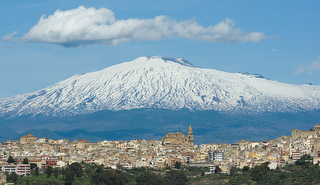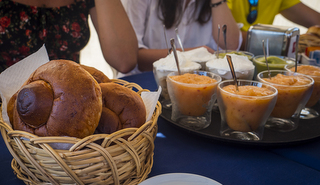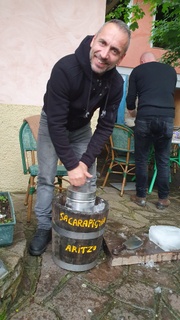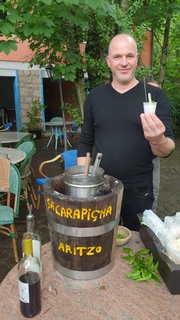Here in Italy we are at the height of summer and the hot temperatures have us reaching for something cold! The technique of preserving and using snow or ice to create refreshing drinks in summer months was known to ancient civilizations, including the Greeks and Romans. Collecting snow and ice from high mountains, storing it in caves and mixing it with fruit flavours became a tradition in different parts of Italy. We take a look at three of their best iced drinks and the stories behind these cooling treats.
Sicily’s Granita


The roots of Granita date back to the Arab rule in Sicily between the 9th and 11th centuries. The Arabs introduced “sherbet,” a frozen drink made with fruit juices or rose water. They also employed the technique of mixing snow from Mount Etna with sugar and fruit juices to create a refreshing treat. During the Middle Ages, Sicilians refined the methods of making Granita, developing its unique texture. Unlike ice cream or sorbet, Granita is characterized by its coarse, crystalline texture, achieved by freezing the mixture and periodically scraping it with a fork. Traditional Granita flavours include lemon and almond, reflecting the agricultural heritage of Sicily. Today coffee Granita is a popular drink, served at breakfast with a brioche, or as a refreshing snack. Sicilian Granita is a culinary legacy that showcases the Sicilians’ ability to blend different cultural influences into a unique and enduring tradition.
Sardinia’s Carapigna


During the period of Spanish rule in Sardinia (1324-1720), the island experienced significant cultural exchanges. The Spanish brought with them various culinary traditions, including methods for making frozen desserts. Carapigna likely evolved during this time, influenced by Spanish and possibly Arab practices. The classic “sa carapigna” was made with just a few simple ingredients: lemon juice, sugar, and water. Traditionally, it was made using snow or ice collected from the mountains. This snow was packed into a wooden barrel called a “barrelu” or “carapignera,” and the lemon-sugar mixture was placed in a metal container, which was then set inside the barrel. The mixture would be stirred continuously to achieve a smooth, slushy texture. It is still a main feature of festivals held across the island and especially of one held in Aritzo in mid-August. We visit this area on our Heart of Sardinia tour and have the chance to try this authentic regional delicacy. Families and local artisans take pride in preserving the traditional method and passing down their cultural knowledge through the generations.
Rome’s Grattachecca


The origins of Grattachecca date back to the early 20th century in Rome. The name “grattachecca” comes from the Roman dialect: “grattare,” meaning “to scrape,” and “checca,” a slang term for a block of ice. It became popular among Romans as a refreshing street food during hot summer months. Vendors, known as “grattachecari,” would set up stalls along the Tiber River and other bustling areas, offering a respite from the heat. The basic ingredients of Grattachecca include a block of ice, fruit syrups, and fresh fruit pieces such as cherry, peach or lemon. The preparation involves manually shaving a large block of ice using a special tool, and it is typically served in a cup with a spoon and straw, allowing the consumer to enjoy the blend of the icy texture and fruity flavours. Grattachecca is deeply embedded in Roman street food culture. It’s not just a dessert but a nostalgic experience for many Romans who recall childhood memories of enjoying it during summer months, and you can still find the kiosks today along the banks of the river.
